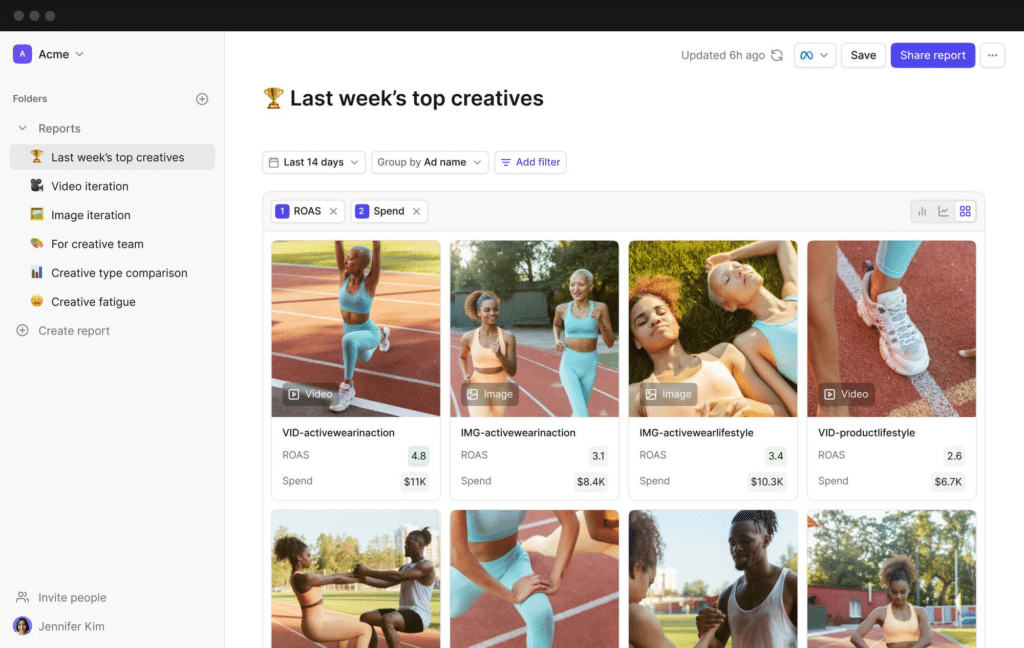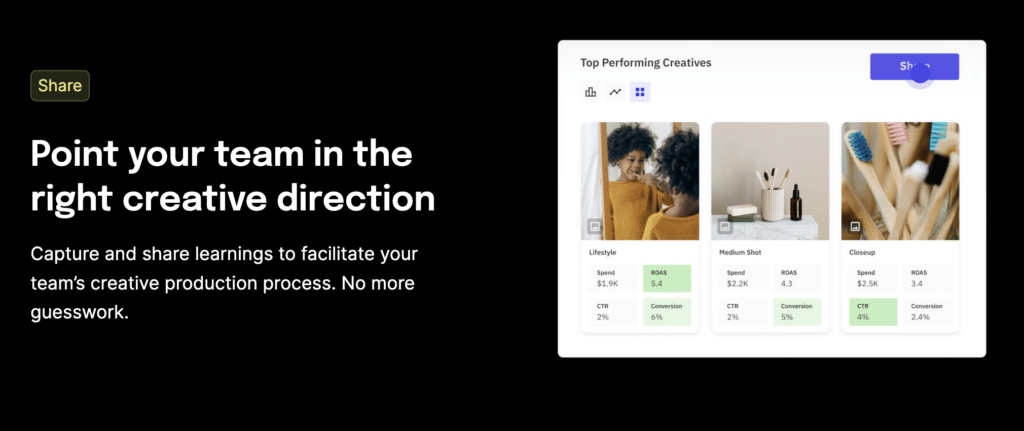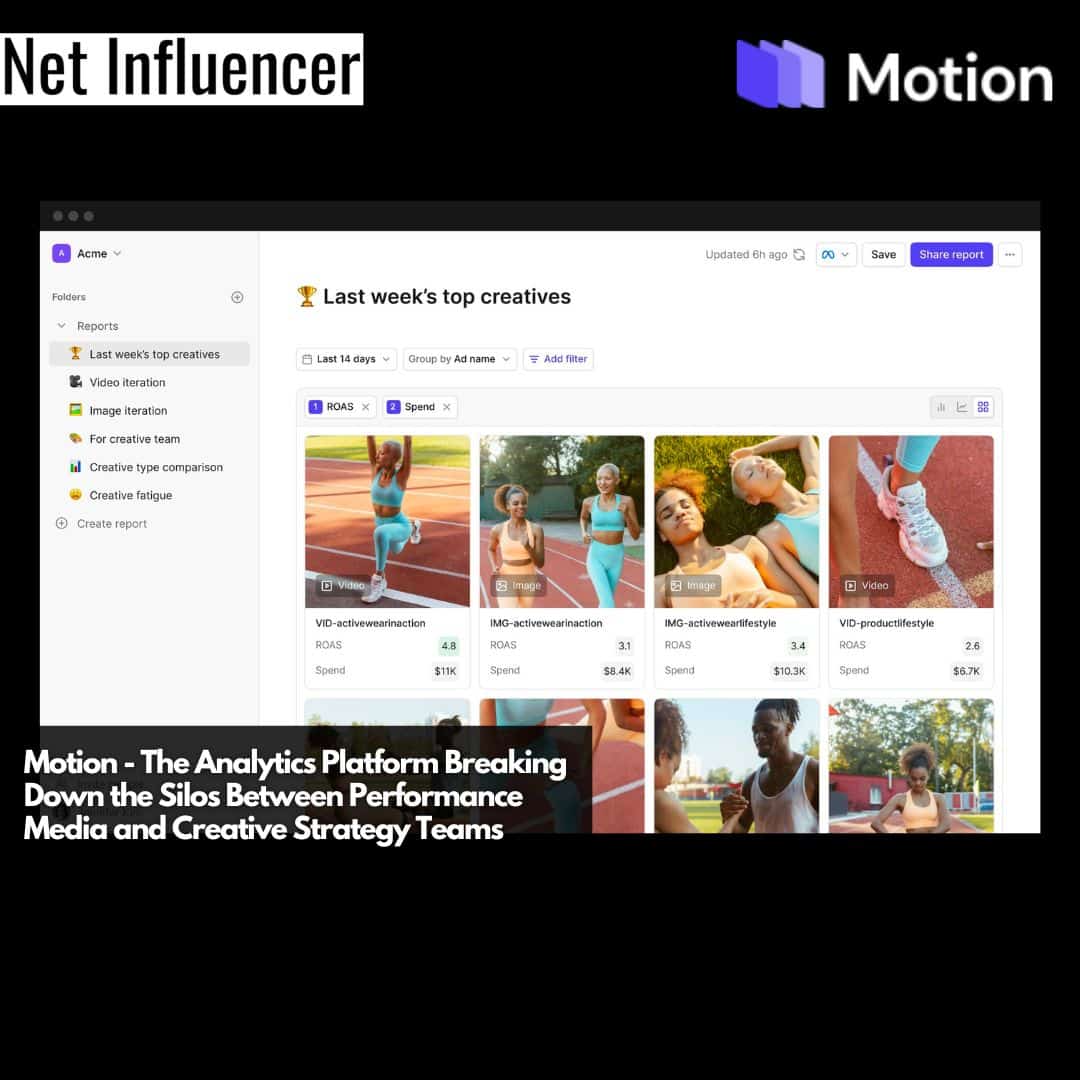Technology
Motion – The Analytics Platform Breaking Down the Silos Between Performance Media and Creative Strategy Teams
“Creative teams often work in silos,” Reza Khadjavi, the CEO and founder of Motion began. While buying teams harness data to evaluate ad performance, the creative teams are usually left in the dark. Logging into various ad management platforms can be cumbersome, and even when some data is pulled into spreadsheets, it’s not a solution that resonates with the artistically inclined.
Founded in 2021, Motion is a creative analytics platform designed to empower creative teams by providing them with actionable insights into the performance of their content. Instead of relegating creative teams to wade through complex data on traditional ad management platforms or decipher intricate spreadsheets, Motion presents the data in a visual and intuitive manner.
This ensures that artistic minds have a clear understanding of how their creations perform in real-world scenarios. From identifying trends in videos to determining which content best captures and retains audience attention, Motion offers a comprehensive toolset for creatives to enhance their work based on concrete data. Reza emphasized, “Analyzing the performance of visual assets in a spreadsheet isn’t efficient. You can’t genuinely visualize the assets.”

Designed exclusively for creative teams, it offers intuitive insights into the performance of their creatives. Whether it’s identifying trends across various videos, recognizing which content best captures audience attention, or understanding which videos drive and convert traffic, Motion serves as a compass for creative direction.
“It’s essential to evaluate your past work with data,” Khadjavi said. In an era where data-driven decisions are the norm, creative teams have been somewhat left behind. Motion aims to change this narrative. Working with numerous brands and agencies, especially in the direct-to-consumer e-commerce sector, Motion has seamlessly integrated into their daily workflows.
Genesis of Motion
The journey of Motion is deeply rooted in Khadjavi’s prior endeavors. Originally starting as a software business named Shoelace, it evolved into a digital marketing agency. However, the hunger to develop a software solution for the industry remained. This led to extensive dialogues with numerous brands and agencies.
“We asked about their biggest pain points, and the topic of ‘Creative’ was omnipresent in every discussion,” Reza shared.
During the infancy of e-commerce, launching a Shopify store and running Facebook ads seemed sufficient. Yet, as the e-commerce landscape matured and competition surged, brands realized that their primary growth lever was to innovate creatively.

Khadjavi elaborated, “Brands needed a plethora of creatives to scale their media spend across platforms. From producing two new ads per week, brands felt the pressing need to ramp up to 15 or 20.”
However, quantity wasn’t the only challenge. The pressing question was: What kind of content should they produce? While some top brands resorted to intricate spreadsheets to glean insights, the creative teams found them unengaging.
“That was our ‘aha’ moment,” Khadjavi exclaimed. “We envisioned the world’s first analytics platform tailored for creative minds, not just data enthusiasts.”
Motion, with its visual-centric approach, was born out of this realization. Its success lies in addressing a persistent problem, one that is growing even as the creator economy evolves.
A Symphony of Data and Visuals
Unlike traditional analytics platforms that prioritize high-level metrics, such as campaign or channel performance, Motion delves into the world of content creation from the ground up. It offers a “bottoms-up analysis,” with the creative asset being the heart and soul of its platform.
The dichotomy of data and visual in the world of digital media can be stark. Often considered disparate elements – akin to oil and water – they represent contrasting approaches to content evaluation. While data is cold, impersonal, and numbers-driven, the visual aspect is organic, subjective, and open to interpretation.

Yet, Motion succeeds in harmoniously integrating these two worlds. Users of the platform rave about its capability to intertwine the realms of data and visual in a single space, an integration hitherto unseen. The traditionally siloed domains of numbers and visuals have found a bridge in Motion.
Consider, for instance, a marketing campaign where the same creative is deployed across ten different campaigns. Traditional analytics tools would show these as scattered and disjointed insights. Motion, however, aggregates this fragmented data, showcasing the cumulative performance of the singular creative, irrespective of its deployment.
This approach has profound implications for the creator economy, particularly when evaluating the performance of different content creators or comparing the effectiveness of different formats like images, videos, or carousels.
Metrics That Truly Matter
While Motion’s visual-first approach is commendable, how does it assist marketers in discerning the metrics that genuinely impact their campaigns?
At its core, Motion offers intuitive visualization of standard metrics, such as the “thumb stop ratio” – denoting the percentage of viewers who pause their scroll to engage with content. Yet, in recognizing the creative community’s aversion to jargon-filled metrics like ROAS, CPM, or CR, Motion introduced ‘Motion Metrics.’
‘Motion Metrics’ is a game-changer. It decodes the essence of complex metrics into straightforward, comprehensible insights. Instead of drowning in esoteric terms, content creators can now grasp metrics like ‘capture attention’ – an indicator of a content piece’s efficacy in arresting viewers’ attention.
Furthermore, Motion doesn’t stop at just capturing attention. It delves deeper into metrics like ‘hold attention’ to determine the retention power of content or ‘drive traffic’ and ‘drive conversions’ to understand the effectiveness of content in achieving tangible results.
By doing so, Motion serves as a bridge, a translator if you will, mediating between the world of media marketing and content creation. It simplifies KPIs, translating them into a language that resonates with creators, ensuring they’re not lost in translation.
Motion App and Mud Water: Building Bridges in the Creator Economy
One of the intriguing revelations of the creator economy is the symbiotic relationship between data-driven insights and creative prowess. A perfect example of this relationship in action is the collaboration between Motion App and the brand, Mud Water.
Mud Water, a brand with a considerable media spend on diverse platforms, sought to fine-tune the feedback loop between raw data and its creative personnel. This quest led them to the services of Motion App—a cutting-edge Creative Analytics Platform.
It’s not just about the tools but the workflow—how effectively a system facilitates collaboration between media buyers and the creative team. Mud Water discovered that with the right tools, they could amplify their media spend across platforms, ensuring they met performance targets.
“The outcome is not purely the magic of Motion,” says Khadjavi. “It’s more about an efficient workflow. While Motion is instrumental in this process, the true victory lies in leveraging data-driven insights for creative ventures. It’s about the interplay between the analytical and the imaginative.”
Demystifying Creative Choices in Marketing: The Motion Advantage
The creator economy is rife with decisions—what creative content to roll out, which strategy to adopt, and how best to allocate resources. At the heart of these decisions is the indispensable value of precise and actionable insights.
While Motion App doesn’t claim to be a media buying tool, it streamlines the decision-making process concerning which creative content to produce. With a myriad of data sources and metrics to decipher, it’s easy for creative strategists to be inundated. Motion steps in, dispelling the complexity and presenting user-friendly insights.
“For the uninitiated, understanding what’s been effective in past campaigns is daunting. It requires data exports, visualization tools, and more,” Khadjavi explains. “Motion simplifies this. With no prior data analysis experience, users can glean key insights quickly, aiding them in making informed decisions.”
Drawing a parallel with the game of backgammon, he elucidates Motion’s dual appeal: “Like backgammon, which is easy to learn but challenging to master, Motion offers immediate value for beginners, but for those who delve deeper, it unveils layers of intricacies—enabling nuanced decision-making from weekly tweaks to quarter-long creative strategies.”
Catering to the Diverse Landscape: How Motion Engages with Smaller Entities
Start-ups, influencers, and content creators form the lifeblood of the creator economy, and Motion acknowledges this with its inclusive approach.
“We offer starter tiers, with our entry-level package priced at a modest $99 per month. It’s designed keeping in mind brands that are still in their nascent stages,” Khadjavi highlights.
Beyond merely being a tool, Motion also positions itself as a potential partner for influencers and content creators. “When these creators discern the value of Motion but find it financially unfeasible, they can introduce the brands they collaborate with to our platform,” he adds.
Elaborating on their partnership program, Khadjavi shares, “Influencers can benefit from Motion’s reporting capabilities for campaigns they’ve orchestrated for brands, further enhancing their collaborative efforts.”
On pricing, Khadjavi is quick to emphasize Motion’s scalability. “For brands with a monthly media spend below $50,000, the pricing remains at $99. However, as their needs and complexity grow, we adapt our offerings accordingly. Our primary goal is to be accessible, especially to those just setting foot in the vast realm of the creator economy.”
Artificial Intelligence and the Creator Economy: An Inevitable Intersection
Khadjavi acknowledged the unpredictability of future trends but hinted at certain emerging patterns that might define the next decade. Central to this discourse was the role of Artificial Intelligence (AI) in the creator space. Khadjavi’s stance on the matter was clear: AI is poised to be a pivotal force, particularly in the realm of content creation.
Drawing a parallel to the transformation witnessed since the advent of devices such as the iPhone, Khadjavi underscored the significant reduction in content production costs. He posited, “The fiscal burden of creating fresh content, once a considerable hurdle, has seen a consistent downtrend. Devices like iPhones have democratized content creation.” Furthermore, he projected a future where creating new digital assets would be almost cost-neutral.
However, this raises pertinent questions for those entrenched in content creation. If production is economically viable and distribution increasingly becomes algorithm-driven, where does the essence of content creation lie? Khadjavi’s perspective is unambiguous: the focus should be on the substance of what is being created rather than the mechanics of its production.
Motion’s Vision: Reconceptualizing the Role of Creative Teams
On discussing the broader objectives for Motion, Khadjavi elucidated a vision that is both ambitious and transformative. He advocated for a shift in the perception of creative teams within organizational structures. According to Khadjavi, creative entities shouldn’t be pigeonholed as mere service providers. Instead, their integral role in generating revenue and driving business growth should be acknowledged and highlighted.
This sentiment stems from a discerned gap in many organizations where revenue attributions linked to creative assets are often credited to marketing teams, leaving the original content creators in the shadows. Khadjavi’s proposition calls for an organizational paradigm where creative leaders don’t just play a part in content generation but also in revenue recognition.
By aligning creative endeavors with data-driven metrics and revenue goals, Khadjavi believes organizations can achieve enhanced efficiency. Motion, he suggests, aims to be at the forefront of this change, endeavoring to equip creative professionals with the tools to quantify and articulate their contributions.













